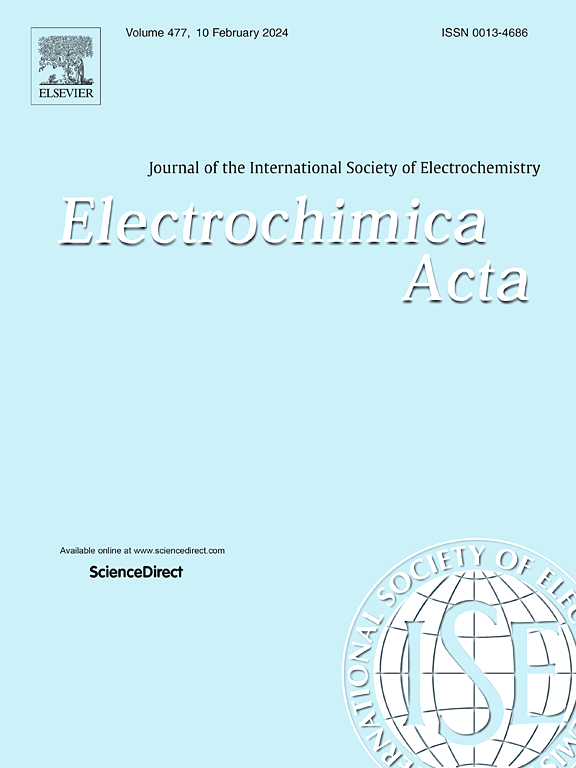用于低温锂电池的具有离子对调制的高效 Li+ 转移功能的共聚阴离子液态电解质
IF 5.5
3区 材料科学
Q1 ELECTROCHEMISTRY
引用次数: 0
摘要
阴离子和阳离子共价拴系的两性离子具有不挥发性、不可燃性、不带电不迁移等特点,在开发安全高性能电解质方面具有很大的潜力。两性离子-锂盐电解质中阳离子与阴离子的相互作用被认为会影响锂离子(Li+)的迁移效率,但研究很少。本文合成了三种不同阴离子基团(- PO4−,- SO3−,- COO−)的两性离子液体(ZIL)电解质。结果表明,具有最大负静电势的- PO4 -基团对Li+具有最强的竞争配位效应,减弱Li+-TFSI -结合,促进锂盐解离。这种配合还有助于降低Li+的迁移能垒,并降低两性离子之间的分子间作用力,从而降低凝固点。具有- PO4 -基团的ZIL-P电解质具有较高的Li+转移数(- 40°C时为0.54)和离子电导率(- 20°C时为1.57 × 10−4 S cm−1),优于大多数液体电解质。增强的Li+转移导致了优异的循环稳定性,在0.5C下循环500次后容量保持率为98.1%。此外,用ZIL-P和硅基框架构建的凝胶电解质提高了电池性能:在0.5℃和- 20℃下,循环600次后,LFP|SiGE-ZIL-P|Li的容量保持率为98.5%。本文章由计算机程序翻译,如有差异,请以英文原文为准。


Zwitterionic liquid electrolyte with efficient Li+ transfer modulated by ion pair for low-temperature lithium battery
Zwitterions, covalently tethered by cation and anion, show great potential in the development of safe and high-performance electrolyte owing to the inherent characteristics of non-volatility, non-flammability, and electrification but non migration. The interaction between cations and anions in zwitterionic-lithium salt electrolyte is supposed to influence the lithium ions (Li+) migration efficiency, but being rarely studied. Herein, zwitterionic liquid (ZIL) electrolytes with three different anionic groups (−PO4−, −SO3−, −COO−) were synthesized. We demonstrate that the −PO4− group with the most negative electrostatic potential exerts the strongest competitive coordination effect on Li+, weakening Li+-TFSI− binding and promoting lithium salt dissociation. This coordination also facilitates a lower migration energy barrier for Li+ and lessens intermolecular forces between zwitterions, reducing the freezing point. The ZIL-P electrolyte with the −PO4− group shows high Li+ transference number (0.54 at −40 °C) and ionic conductivity (1.57 × 10−4 S cm−1 at −20 °C), outperforming most liquid electrolytes. The enhanced Li+ transfer results in excellent cycling stability, with a 98.1 % capacity retention after 500 cycles at 0.5C. Furthermore, the gel electrolyte constructed with ZIL-P and silicon-based framework improved battery performance: LFP|SiGE-ZIL-P|Li after 600 cycles with capacity retention rate of 98.5 % at 0.5C and −20 °C.
求助全文
通过发布文献求助,成功后即可免费获取论文全文。
去求助
来源期刊

Electrochimica Acta
工程技术-电化学
CiteScore
11.30
自引率
6.10%
发文量
1634
审稿时长
41 days
期刊介绍:
Electrochimica Acta is an international journal. It is intended for the publication of both original work and reviews in the field of electrochemistry. Electrochemistry should be interpreted to mean any of the research fields covered by the Divisions of the International Society of Electrochemistry listed below, as well as emerging scientific domains covered by ISE New Topics Committee.
 求助内容:
求助内容: 应助结果提醒方式:
应助结果提醒方式:


